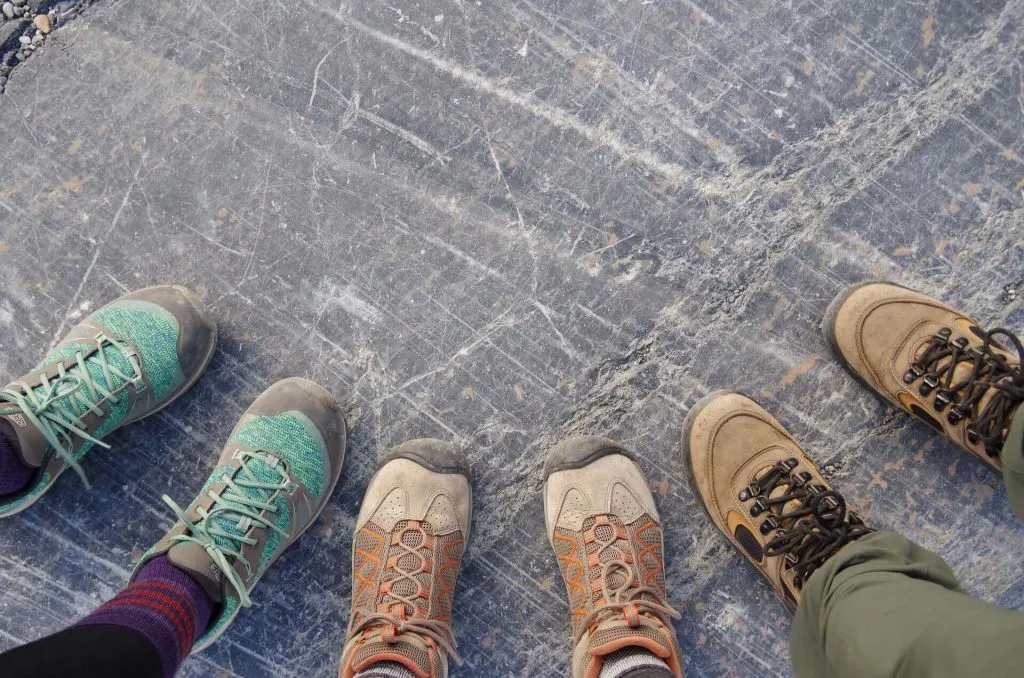
Choosing the right women’s mountain boots is essential for a successful and enjoyable hiking experience. Mountain boots provide support and protection to the feet during hiking on rough terrain, rocky trails, and steep ascents. Selecting the right pair of boots can prevent discomfort, injuries, and fatigue, allowing hikers to focus on the beauty and adventure of the mountains. In this article, we will discuss how to choose women’s mountain boots.
Purpose
The first step in choosing women’s mountain boots is to determine the purpose of the boots. Different types of mountain boots are designed for different types of hiking, such as day hikes, multi-day hikes, alpine hikes, or mountaineering. The purpose of the boots will influence the materials, features, and durability of the boots.
Fit
The fit of women’s mountain boots is crucial for comfort and safety during hiking. A proper fit should provide enough room for the toes to move and enough support to prevent the feet from sliding inside the boots. The boots should fit snugly around the ankles to provide support and prevent blisters. Hikers should try on boots with the socks they plan to wear during hiking and walk on different terrains to ensure the boots fit properly.
Materials
The materials of women’s mountain boots can impact their durability, weight, and performance during hiking. The most common materials used in mountain boots include:
Leather: Leather is a durable and water-resistant material that is commonly used in mountain boots. Leather provides support and protection to the feet and can be treated to increase their water resistance. However, leather boots can be heavy and require a break-in period to ensure proper fit and comfort.
Synthetic materials: Synthetic materials, such as nylon and polyester, are lightweight and breathable, making them ideal for hiking in warm weather. Synthetic materials can also be waterproof and require less break-in time than leather boots. However, synthetic boots may not be as durable as leather boots.
Gore-Tex: Gore-Tex is a waterproof and breathable membrane that is commonly used in mountain boots. Gore-Tex provides protection from water and snow while allowing air to circulate, preventing sweat build-up. Gore-Tex boots are ideal for hiking in wet and cold weather conditions.
Traction
The traction of women’s mountain boots is crucial for preventing slips and falls on rough and slippery terrain. The outsole of the boots should provide enough grip and traction to prevent slipping on wet rocks, muddy trails, and other slippery surfaces. The depth and pattern of the lugs on the outsole can impact the traction of the boots.
Support
The support of women’s mountain boots is essential for preventing injuries and fatigue during hiking. Boots with proper support can reduce stress on the feet and ankles, preventing strains, sprains, and blisters. The support of the boots can come from the materials, such as shanks or plates, or from the design, such as ankle support or cushioning.
Weight
The weight of women’s mountain boots can impact their performance and comfort during hiking. Heavy boots can be tiring and cumbersome, reducing the speed and agility of hikers. Lightweight boots can be more comfortable and allow for greater freedom of movement. However, lightweight boots may not provide as much support or protection as heavier boots.
Durability
The durability of women’s mountain boots is essential for their longevity and effectiveness during hiking. The materials and construction of the boots can impact their durability. Leather boots are typically more durable than synthetic boots, but they may require more maintenance and care. The quality of the stitching and the materials of the outsole can also impact the durability of the boots.
Style
The style of women’s mountain boots can impact their comfort and performance during hiking. Boots with high-top designs can provide more ankle support and protection, while low-top designs can be more lightweight and flexible. The style of the boots can also impact their aesthetics and versatility, allowing hikers to choose boots that match their preferences and needs.
In conclusion, choosing the right women’s mountain boots is essential for a safe, comfortable, and enjoyable hiking experience. The purpose, fit, materials, traction, support, weight, durability, and style of the boots should be considered when selecting the right pair of boots. Women’s mountain boots are an investment in the health and safety of hikers, allowing them to explore and appreciate the beauty of the mountains without discomfort or injuries.

